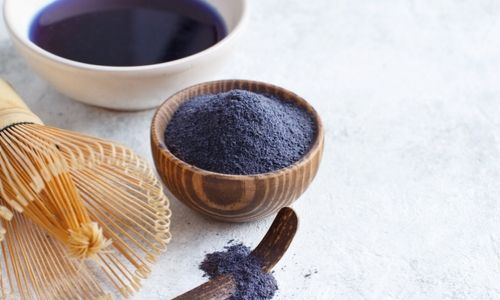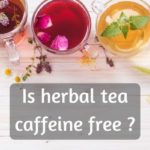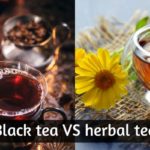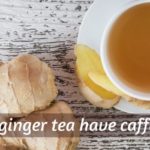Blue Matcha seems to be in everyone's social media lately, and there's this sort of mystery around it. What is it, where does i come from ? Is blue Matcha the same as green Matcha ?
It's certainly pretty and it manages to catch everyone's attention. Very much like another blue tea that's been trending lately.
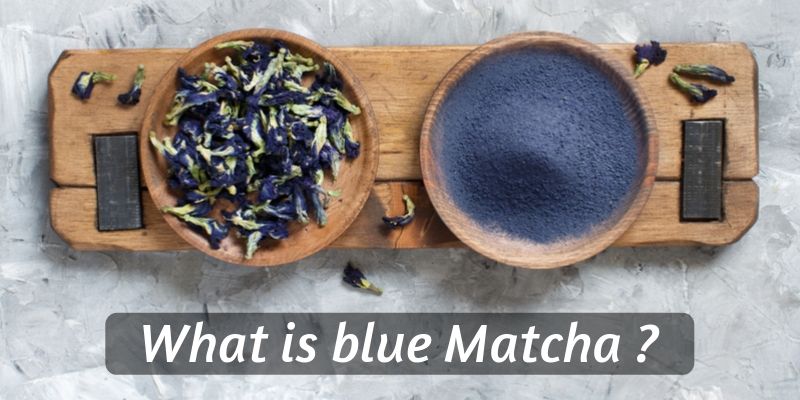
Table of Contents
What is blue Matcha ?
Blue Matcha is made from the dried and crushed petals of the butterfly pea flower. It has no caffeine and has different antioxidants from regular Matcha.
The process of making blue Matcha is very similar to how regular Matcha is made. The flowers are hand-picked, dried, and then ground into a very fine powder. Only the result is blue, instead of green.
The resulting blue Matcha can then be mixed into any drink of food, mainly as a food dye since its flavor is very mild.
''Blue Matcha'' comes from the form of the tea, rather than the taste or any similarity it may have to regular Matcha. While it can be confusing, and it might generate more sales, it's essentially just powdered blue flowers.
Is blue Matcha the same as regular Matcha ?
No, blue Matcha is not the same as regular Matcha.
Regular Matcha, the green one we all know and love, is made using the Camellia sinensis leaves.
Specially grown, picked, and then processed, the green Matcha is very different from the blue.
Blue Matcha is made from an entirely different plant, and it's made from the flowers of said plant, instead of the leaves.
They might look very much the same, and might mix the same way into a latte or smoothie but they're very, very different.
Where blue Matcha tastes very mild, a little earthy and floral, green Matcha has a deep, umami flavor that's not easily forgotten or mistaken.
There's also the fact that regular Matcha comes at a premium cost, while blue Matcha is a little cheaper. Not exactly easy to find just yet, since it's not a very well known tea, but it's getting there.
Powdered teas seem to be having a moment, as you can also find powdered red tea made from other flowers, and most of the time you'll find powdered teas in the food dye section. Right next to powdered spirulina and other natural food dyes.
Check out regular butterfly pea tea, it's just as colorful
If you think blue Matcha is cool, then you've got to see the original tea it's made from. It's got a much deeper shade of blue to it and it can change color to deep purple if you add lemon juice to it (or anything acidic).
Butterfly pea flower tea is the name, and it's made not from tea leaves but from dried flowers. It's been all over social media too, a little before blue Matcha was a thing.
Does blue Matcha have the same health benefits ?
Regular Matcha and blue Matcha share a few health benefits, but not as many as the name would suggest.
They share a certain amount of antioxidants, though they're not the same. Even if not the exact same, their general effect is similar.
Any sort of antioxidant will contribute to the overall health of a person, mostly by blocking the development of free radicals.
Free radicals seems to be linked to many health issues, chief among them being cancerous growths. So you could argue that blue Matcha and regular Matcha may share this trait.
While blue Matcha has been approved for use in cosmetics as a source of antioxidants (1), it's still less appreciated than regular Matcha.
This is due to Matcha's thoroughly researched antioxidant count and their effects on human and animal health (2, 3, 4), while blue Matcha is made of a plant that does not posses as many nutrients to begin with.
Does blue Matcha have caffeine ?
No, blue Matcha has no caffeine to speak of since the plant it's made from has no caffeine to begin with.
Seeing as blue Matcha is a form of herbal tea, like its original form of butterfly pea flower tea, there is no caffeine in it.
If you ever do find a blue Matcha with caffeine in it, it's because it was added. Either by blending it with another tea that has caffeine - like black tea for example - or by artificially added caffeine extract.
Blue Matcha is perfect as a food dye
While blue Matcha has no definite flavor, it's wonderful as a food dye.
Probably because it has no definite taste, aside from a mild flavor, this tea powder is one of the best ways to dye smoothies and puddings or what have you.
For example the flowers the blue Matcha is made from are used in a rice dish called Nasi Kerabu, where the rice turns a sky-blue that's both alien and delicious looking.
You could also use this tea powder in a latte to turn the whole drink a very interesting and unusual color, and it could just make someone's day.
As you may or may not know, regular blue tea turns a beautiful shade of purple is you squeeze a bit of lemon juice in it. I've never tried it but I'm guessing the blue Matcha should react the same way.
You should get a purple Matcha as a result, and I think that would floor everyone. Imagine a Halloween party with green and purple Matcha !
If you're looking for a recommendation then this blue Matcha from Sou Zen might be what you're looking for. It comes in a 2.8 oz/80 gr pack, and is culinary grade.
So it's safe to use as a food dye, in tea, in soaps, baths, whatever you choose to use.
Keep in mind that the flavor of blue Matcha isn't very strong, so you might just need to add a flavor you like. For example mixing this ta powder into a smoothie will turn it a beautiful blue, and keep the flavors of the original smoothie.
You can find the listing on Amazon here, and read the reviews as well.
Conclusion
Blue Matcha is not very well known just yet, but hopefully this post made things much clearer for you.
It's a beautiful drink, just as blue tea is a very attractive tea and it's no wonder you're seeing everywhere these days. Give it a try, and you might just call in love with it.
If you want to know more about coffee or tea, feel free to check the related articles below. Who knows what else you might find ?

